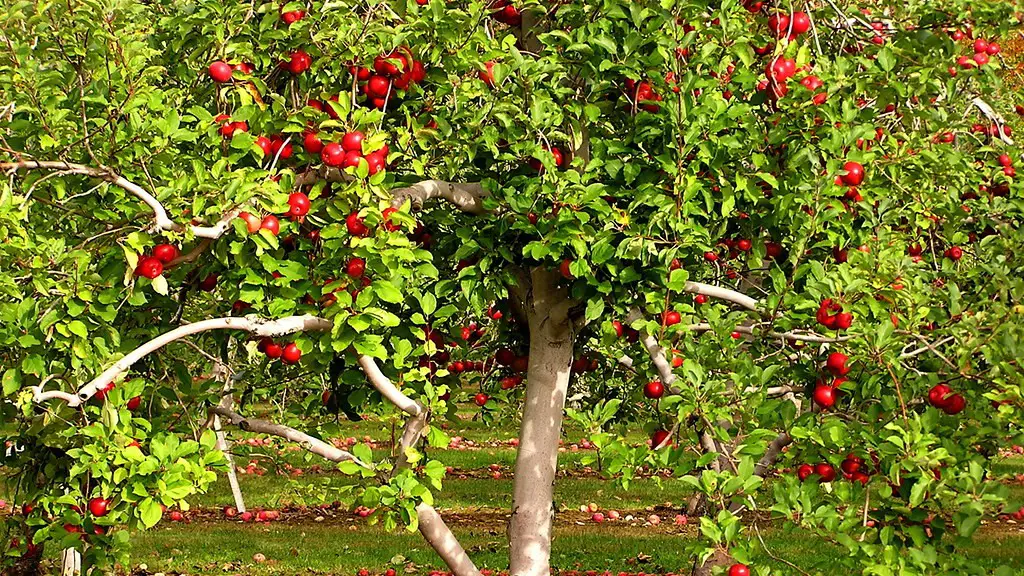Using Proper Tools for Pruning European Fan Palm Trees
Pruning European fan palm trees is both a technical and an art form. It can take some practice and experience to even begin to know where to start. Having the right pruning tools and taking preventative measures beforehand can help ensure that your experience goes smoothly.
Sharp Blades are Key
When trimming a European fan palm tree, you want to ensure you have sharp blades. Dull, worn-out blades can brown and damage the fronds, hindering the tree’s growth and development. If you are dealing with a large tree, it’s a good idea to invest in pole tree pruners to avoid the strain of having to climb the tree with a ladder. Additionally, a saw-toothed pruner is useful for removing thick stems and branches.
Be Mindful of Angles
For a successful prune job, it is also important to consider the angle at which you cut. When cutting upward from the bottom of the branch or frond, use a 45-degree angle to provide a clean cut and maintain the aesthetic quality of the tree. On the other hand, if cutting from the top of the branch or frond downwards, it’s best to use a flat, straight angle.
Continuous Rains and Proper Drainage
The amount of rainfall an area receives, as well as the drainage conditions, play a crucial role in keeping European fan palm trees healthy. A lot of rainfall can cause root rot, while inadequate drainage can lead to irreversible soil compaction and even death. To combat this, it is recommended that the soil be tested near the tree’s roots and the surrounding area to identify any potential drainage problems.
Symmetry
Maintaining symmetry while pruning is essential. If a branch is too long or too wide, or if the tree develops a lopsided growth pattern, it can be necessary to cut back the fronds to balance it out. As long as you keep one side in check with the other, regular pruning will help maintain a symmetrical shape for the European fan palm tree.
Removing Dead Fronds
Sometimes, especially if the tree has been exposed to increased wind or harsh weather conditions, it can be necessary to remove dead or damaged fronds from the European fan palm tree. It’s advisable to do this task before pruning, as dead or damaged fronds can be a reason for different bacterial or fungal infections in a tree. Removing these fronds can help protect the health of your tree.
Proper Timing
Pruning should not be done arbitrarily. The best season for pruning European fan palm trees is either in early spring or late summer, before the rainy season. It’s especially important to avoid pruning them during a drought, as the tree may not have enough energy to heal its wounds.
Aesthetic Versus Pruning Compliance
Pruning European fan palm trees mostly requires a careful balance between aesthetic considerations and compliance with pruning regulations. Although it is possible to make the tree aesthetically pleasing while still complying with local pruning laws, the ideal scenario is to come up with a compromise between the two that both sides can agree upon.
Debris
Before getting started, make sure you clean up any debris that may inhibit your ability to prune the tree safely. Leaves and branches can accumulate over time and create a precarious work environment. It is important to ensure that the area is free of debris that could cause you to slip or fall while pruning.
Inspecting Trees Regularly
Regular inspection of a European fan palm tree is key to helping keep it healthy. This can involve looking for yellow or brown fronds and losing leaves, as both are indicators of tree stress. It is advisable to regularly inspect the crown and trunk of the tree, as well as the surrounding soil, to identify any potential problems before they escalate.
Taking Safe Measures
Safety should be of utmost importance when pruning European fan palm trees. Taking the appropriate safety measures beforehand, including wearing safety goggles and gloves and maintaining a secure footing, can help protect you from any potential injury. It is also important to make sure that the area is well lit and free of any potential hazards.
Reasonable Timelines
When planning a pruning job, you should ensure that you are able to complete the work within reasonable timelines. If you will not be able to complete the job, it is a good idea to contact a professional arborist, who will be able to safely prune and trim the tree, while providing advice on how to care for it in the long run.
When to Call for Help
Attempting to prune a European fan palm tree can present a daunting task if you don’t have the right tools, training, or experience. It takes a keen eye to identify the factors necessary for a successful prune job, and this is where a professional arborist comes into play. Calling in a professional arborist can help identify potential health problems and advise on future prune operations.
Tree Architecture
Before any pruning begins, it is important to understand how European fan palm trees grow. It is key to keep the tree’s architecture in mind, as this can help you determine where to make cuts and which branches should be removed. In addition to this, understanding your local pruning laws and regulations is essential, as breaking them can lead to hefty fines or even criminal charges.
Health Effects of Pruning
If not done correctly, pruning can have a negative effect on European fan palm trees and their surrounding environment. Pruning a large portion of the tree at once can delay the growth process and hinder its ability to heal and protect itself from environmental stressors. Therefore, it is important to consider this before removing large portions of the tree at once.
Applying Fertilizers
Fertilizing European fan palms is an effective practice to help keep the tree healthy. Before applying any fertilizers, however, it is a good idea to take a soil sample and send it to a local lab to determine the nutrient content of your soil. This can help you determine the type and amount of fertilizer you should use.
Balancing Growth and Aesthetics
When pruning European fan palm trees, it is important to consider the impact that pruning has both on the tree’s growth and its aesthetic qualities. Making sure the tree is properly balanced, with even growth rates on both sides, and incorporating aesthetic restrictions, can help ensure pruning is successful.
Maintaining Growth
Maintaining balanced growth plays a key role in successful pruning. Optimal growth will depend on the size and age of the tree, as well as environmental factors such as sunlight and rain. Pruning too much can slow growth, so it’s best to make sure that enough tissue is left for the tree to continue growing.
Crown Reduction Versus Seedlings
Reducing the crown of a mature European fan palm tree can be a daunting task, and it is best to call in a professional arborist if attempting it. On the other hand, if you recently acquired a seedling of this type of tree, it is best to start by pruning them with sharp, clean tools before they have a chance to start growing.
Fertilizing Regularly
Fertilizing regularly will help promote healthy growth for a European fan palm tree. Depending on the size and age of the tree, you may need more or less fertilizer to encourage a sustained rate of growth. Additionally, you may want to consider a balanced fertilizer, as this can help keep the fertilizer from washing away.
Air Pruning
Air pruning is a technique used to help ensure proper development of branches on a European fan palm tree. It involves carefully pruning the tree with an air pruning tool and paying close attention to the tree’s architecture. This technique can help provide stress-free growth that helps keep the tree healthy.
Protecting the Tree from Sunburn and Frost
The sun can be both a blessing and a curse for a European fan palm tree. In climates that get warm and dry, it is important to protect the tree from sunburn, as this is a common symptom of too much exposure to sunlight. The ideal solution is to water the tree regularly and provide shade if possible. On the other hand, if the climatic conditions produce frost, you may need to cover the tree and mulch the soil to keep the cold from infiltrating deeper into the root system.
Pruning After a Long Dry Period
If your area hasn’t seen much rain, it is best to wait to begin pruning your European fan palm tree until after rainfall has been consistent for at least two weeks. The reason for this is that a tree that has been exposed to a long dry period won’t have enough reserves to heal its wounds, leading to further complications down the road.
Timely Pruning
Timing your pruning job is essential to ensure that it is successful and that the tree is adequately protected. Pruning too early or too late can lead to further complications, and it is best to contact a professional before attempting a large prune job.
Staking or Guying
In climates with frequent heavy winds and storms, it can become necessary to stake or guy a European fan palm tree. This involves securing the plant’s trunk and root system with either stakes or guy lines, both of which help reduce the amount of stress and damage the tree experiences.
Cluster Pruning
When pruning a European fan palm tree, it may be necessary to assign clusters or sections in order to make the job easier. By assigning clusters, it can be easier to manage and undertake the pruning job effectively, while ensuring the tree’s health is maintained.
Caring for the Tree After Pruning
Once pruning is complete, it is important to take certain post-care measures to ensure the health of the tree is maintained. This can include monitoring the tree for signs of potential problems, such as browning fronds, drooping leaves, or an unexpected change in the soil pH. Additionally, it is advisable to Mulch the area around the tree to discourage weeds and help maintain moisture.
Using Pesticides or Fungicides
Additionally, if you notice any signs of pests or disease in the tree, it is a good idea to consider using pesticides or fungicides. As this procedure should be done carefully, it’s best to contact a professional arborist who will be able to identify the type of pest or disease affecting the tree and suggest the best way to deal with it.
Watering the Tree
Watering a recently pruned European fan palm tree is essential for encouraging new growth and for preventing dehydration. Depending on the area’s climate, the amount of water needed will vary, but it should always be given deeply and thoroughly to encourage the development of deep roots. Additionally, while it is important to ensure the tree receives enough water, it should also not be over-watered.
Weeding Regularly
With any recently pruned tree, it is important to monitor the area around it and make sure that weeds don’t develop. Weeds can compete for the tree’s resources, such as water and nutrient content, leading to a potential imbalance in the tree’s growth and development. By regularly keeping the area around the tree weed-free, you can help ensure its health.
Adding Mulch or Compost to Soil
Mulching and adding compost to the soil around the tree can be beneficial for sustaining the tree’s growth. These activities help ensure the soil is healthy and the tree gets access to the nutrients it needs to continue growing. Additionally, mulch helps maintain moisture content in the soil, which is beneficial in dry climates.

